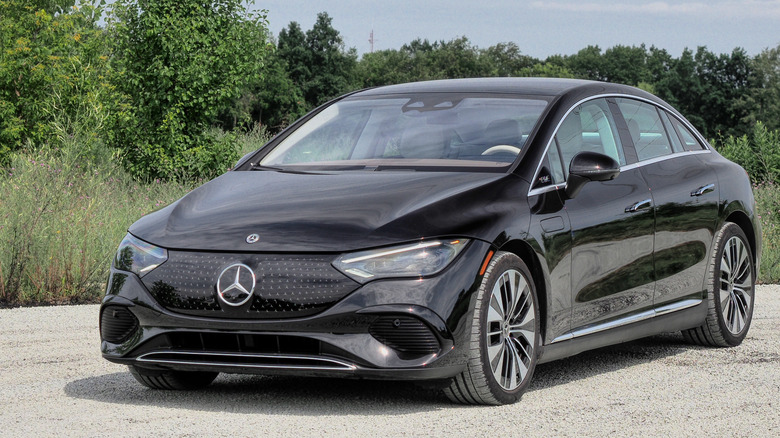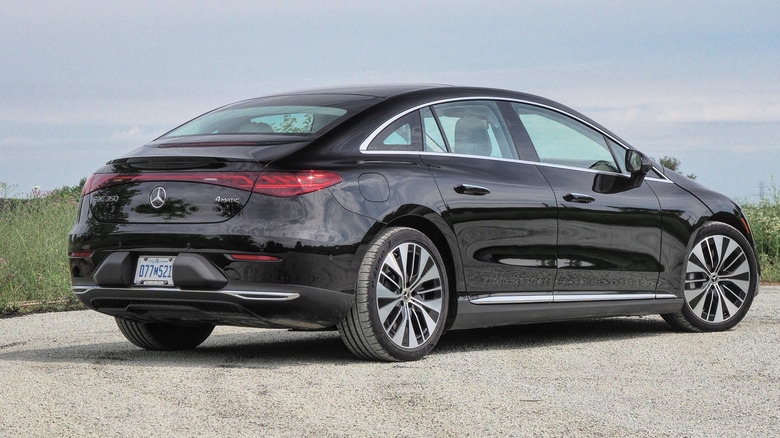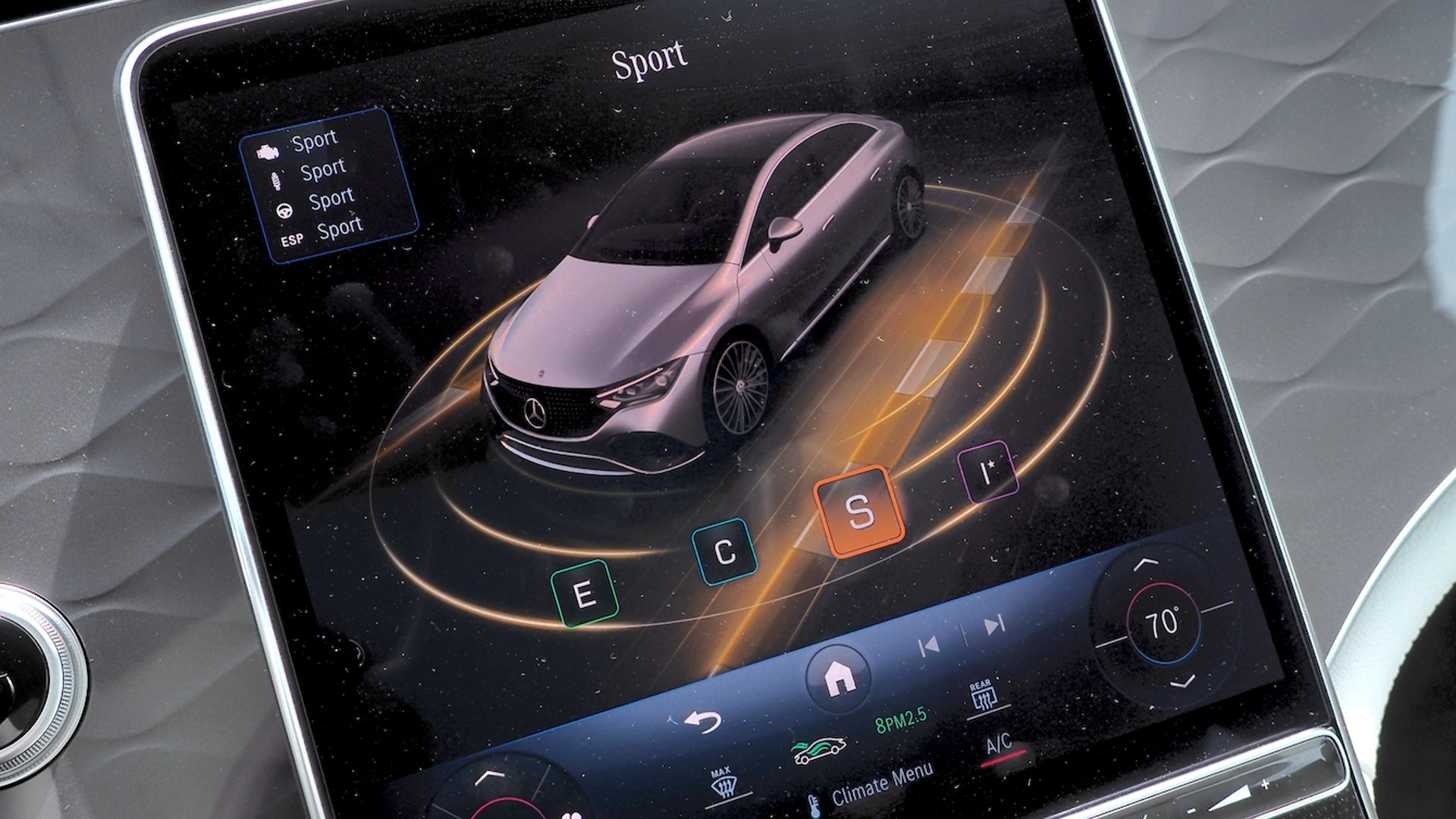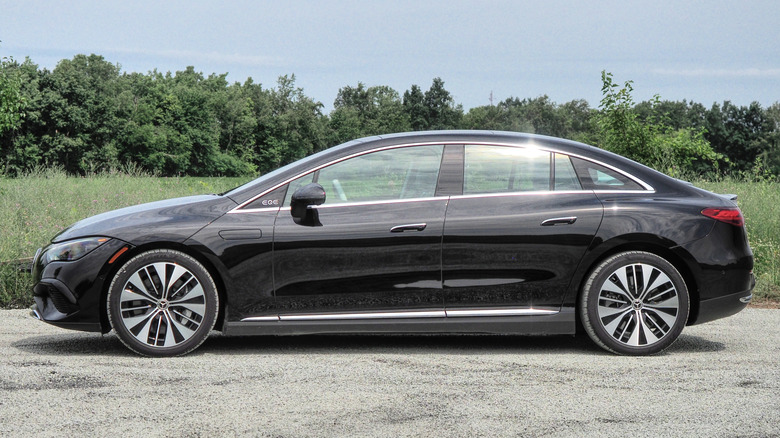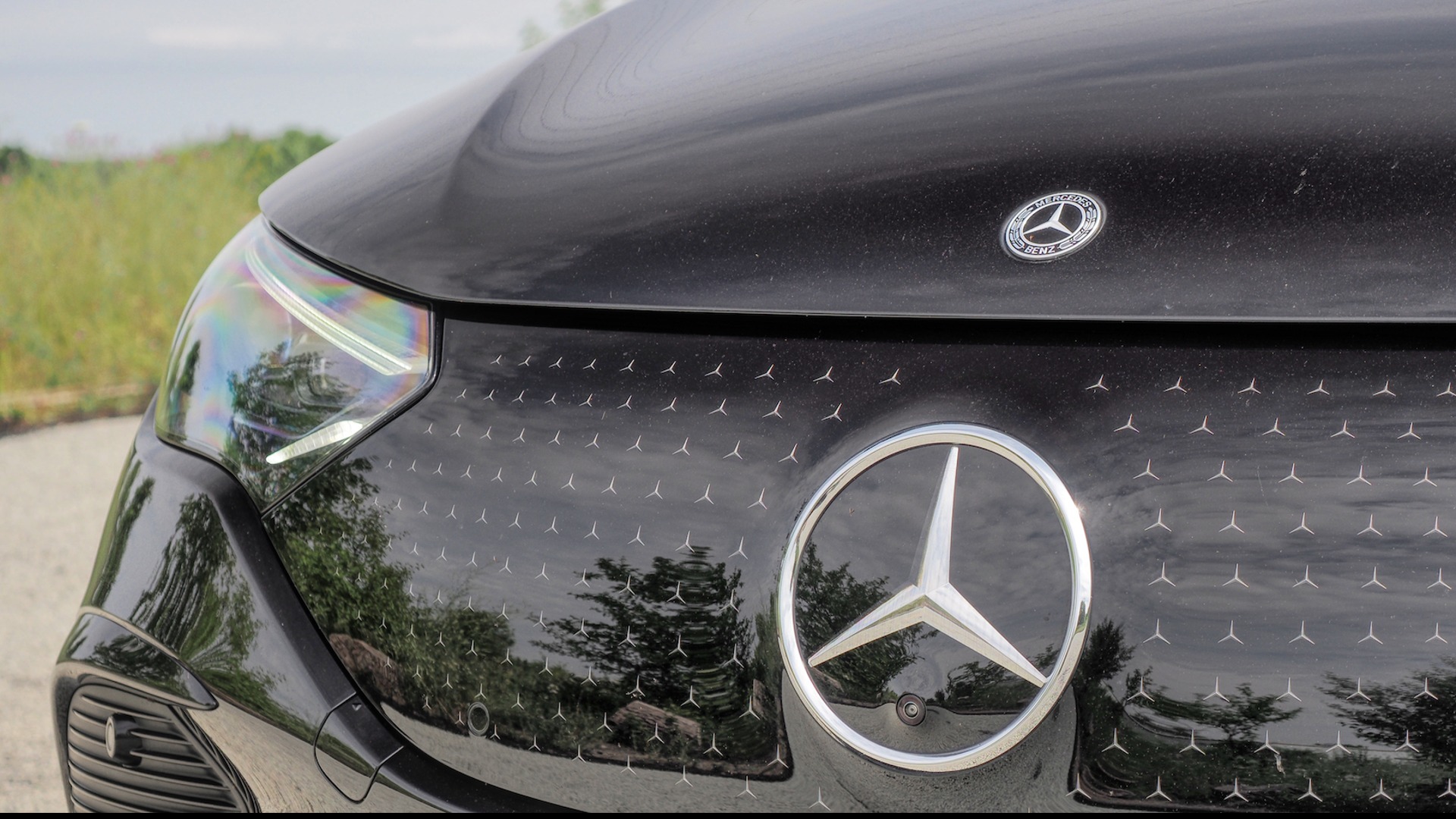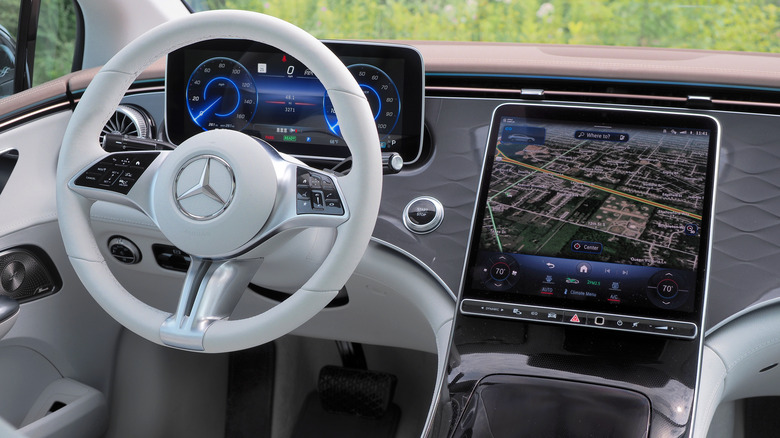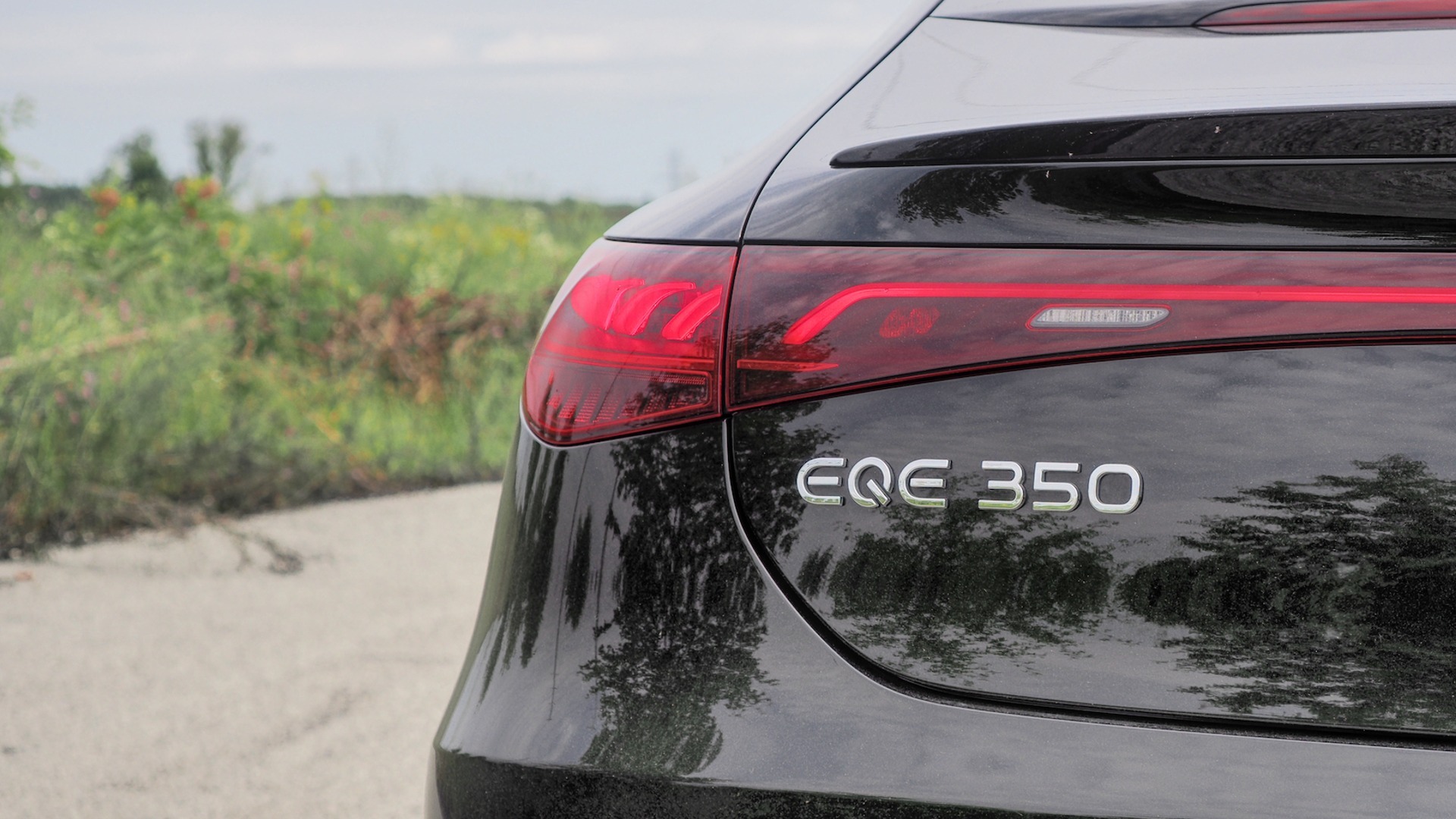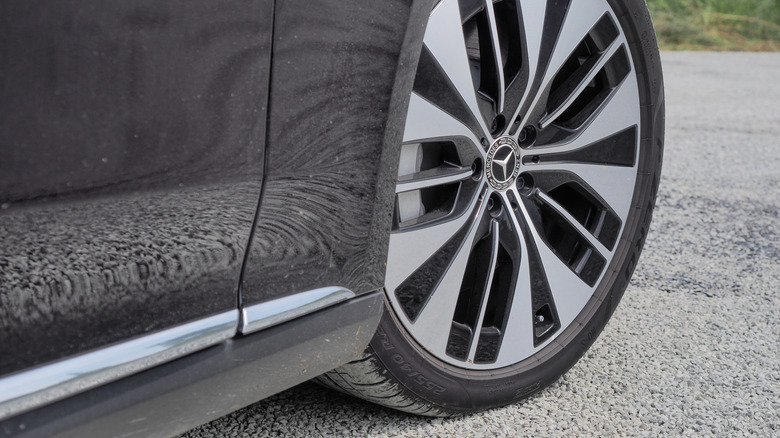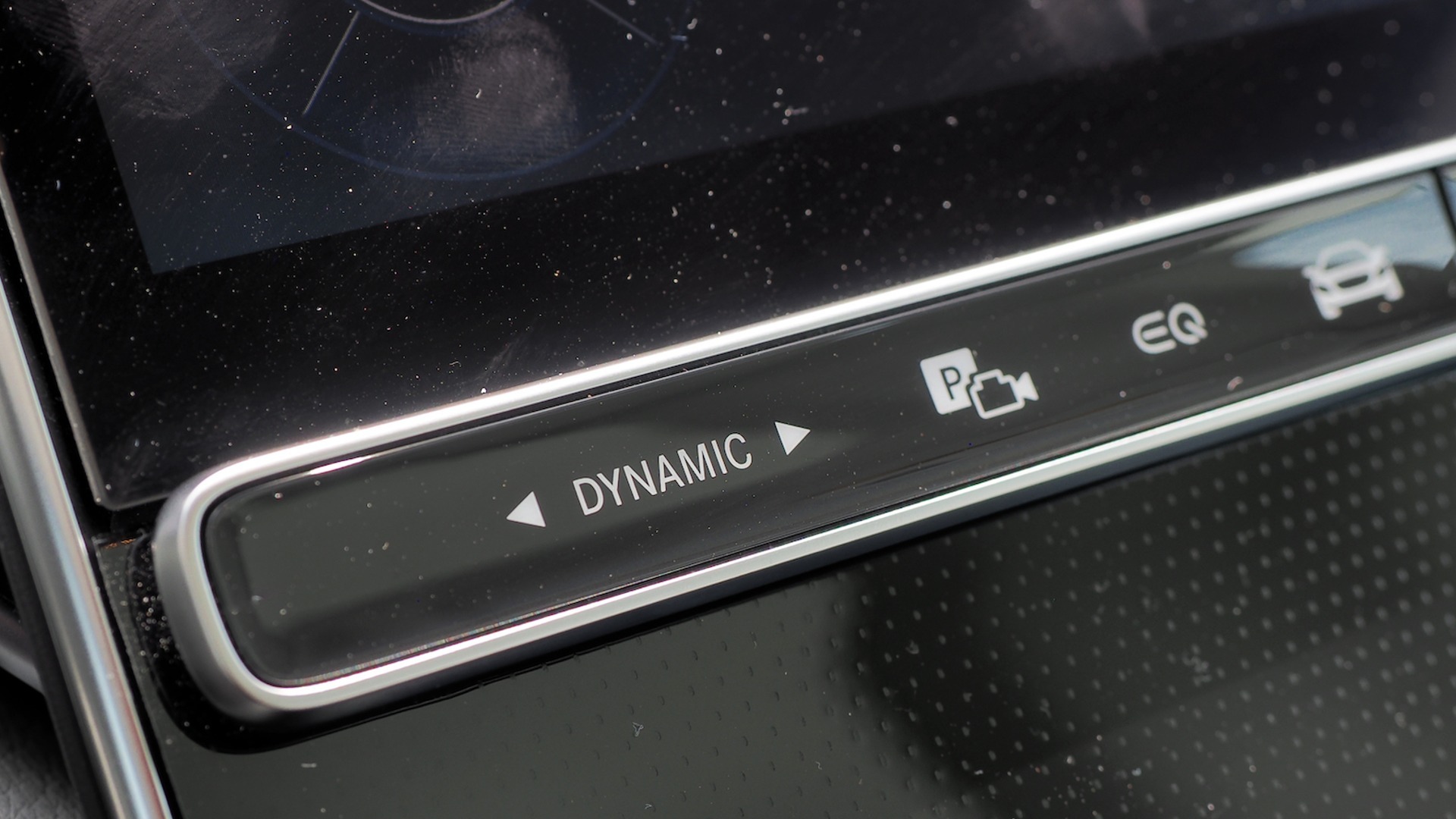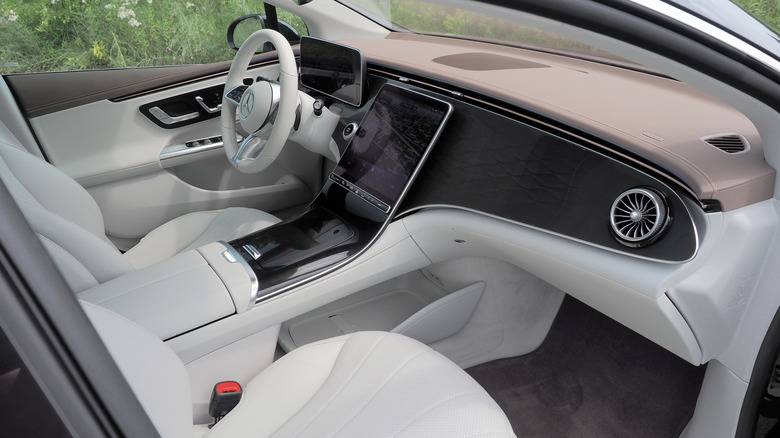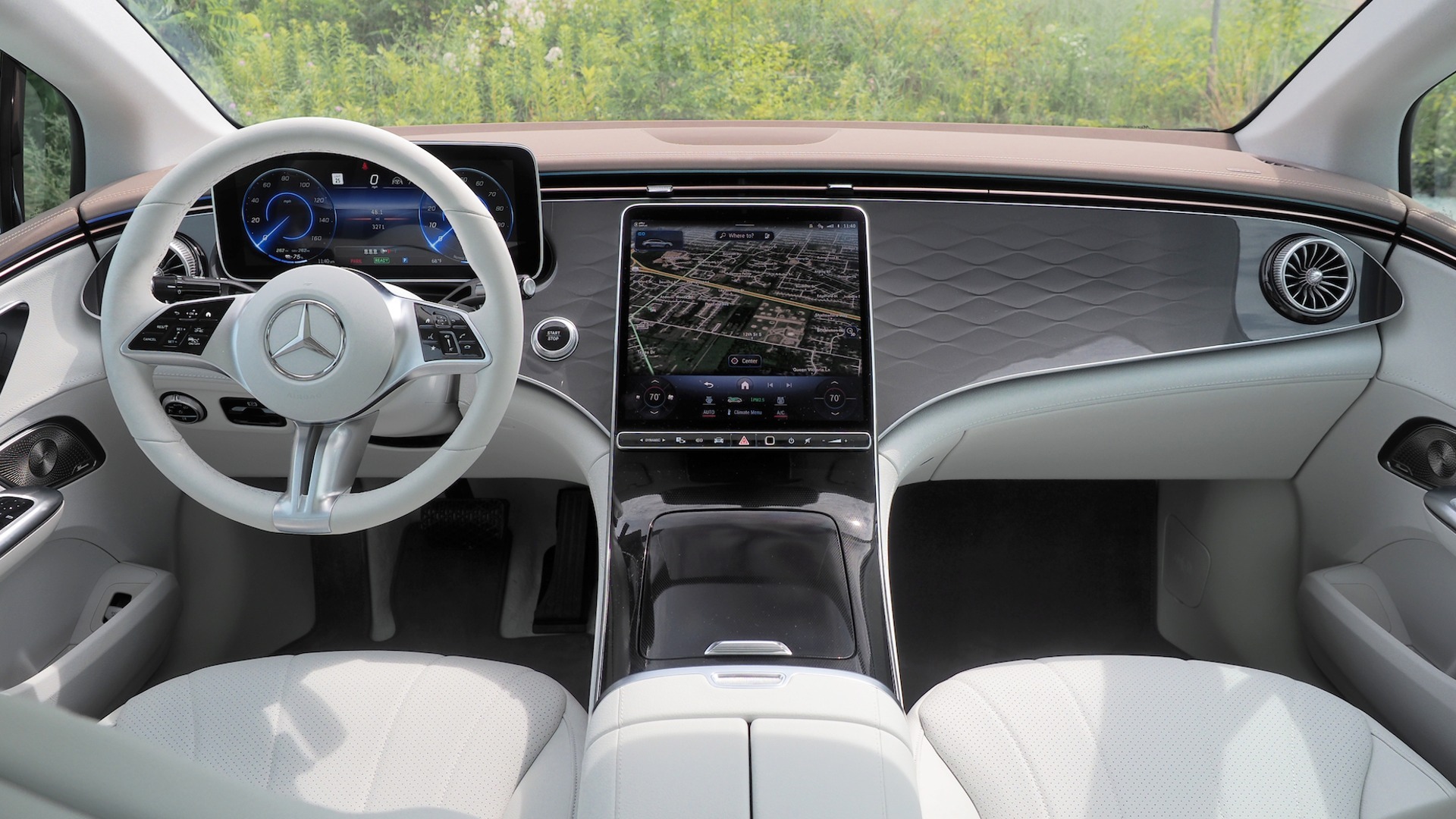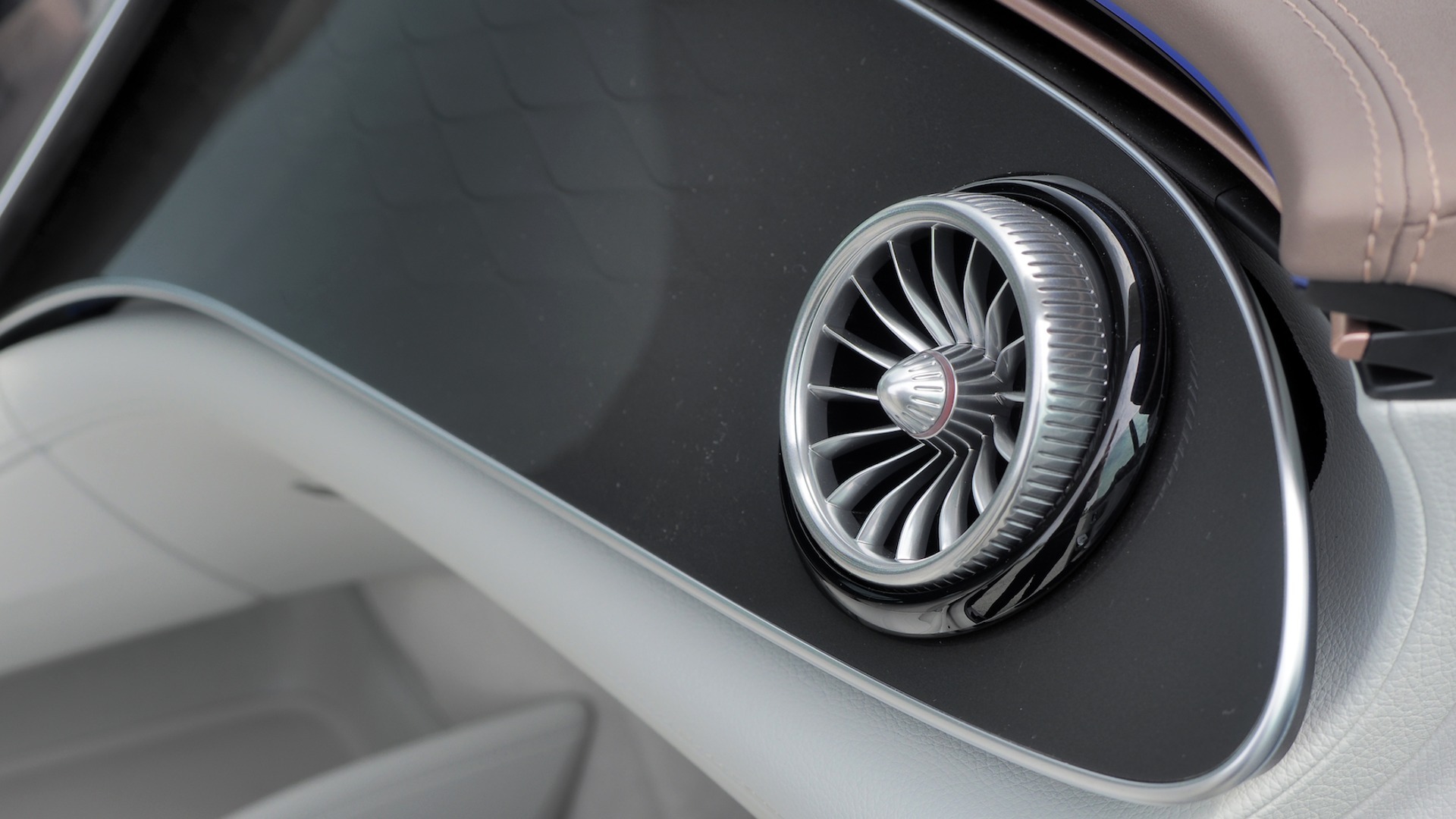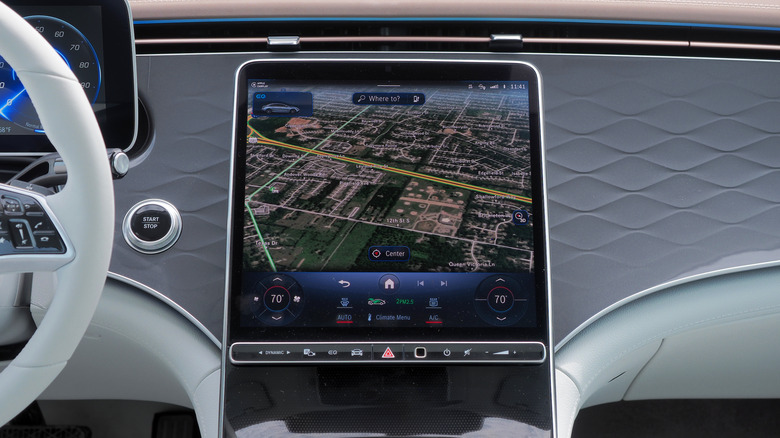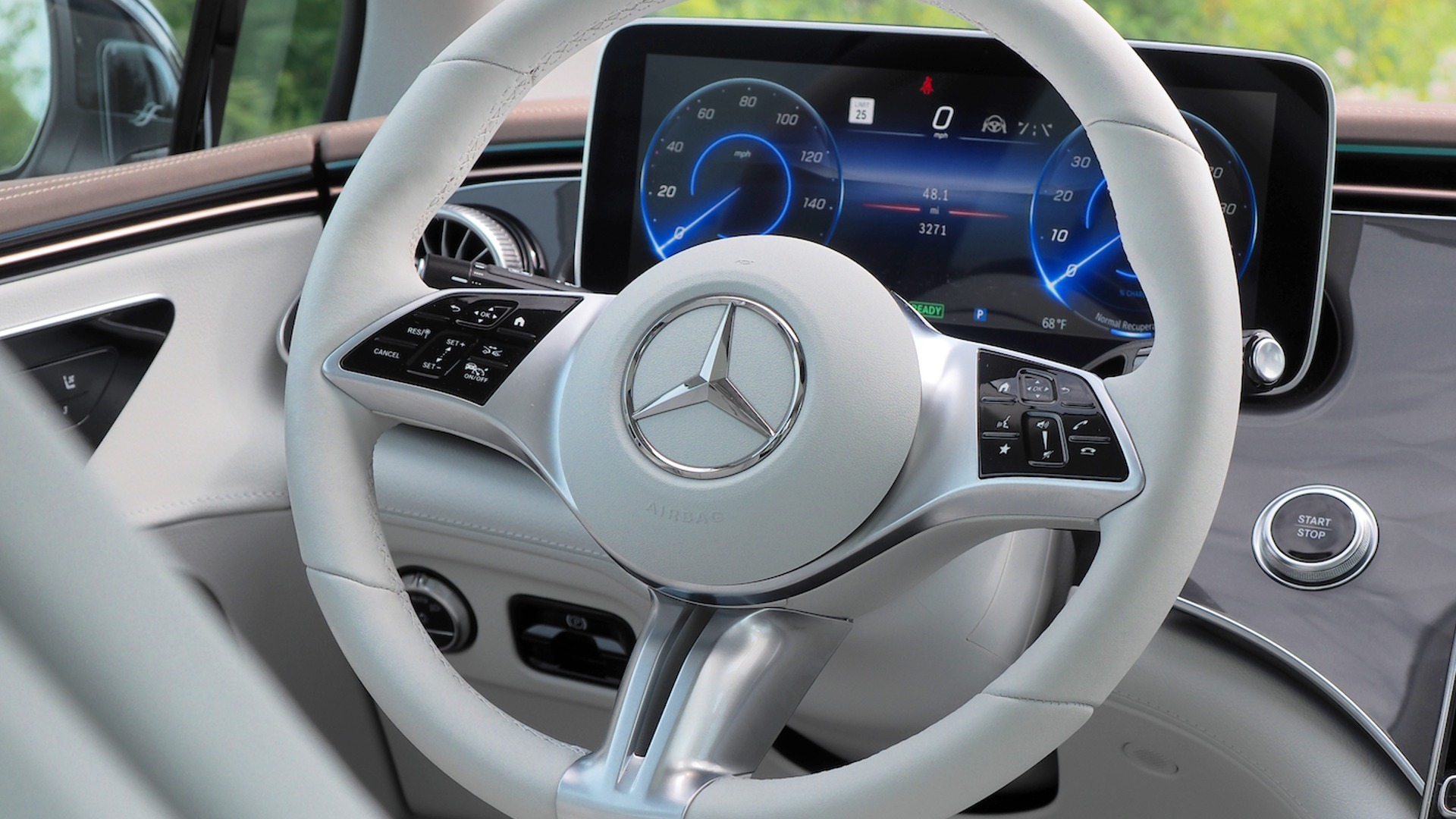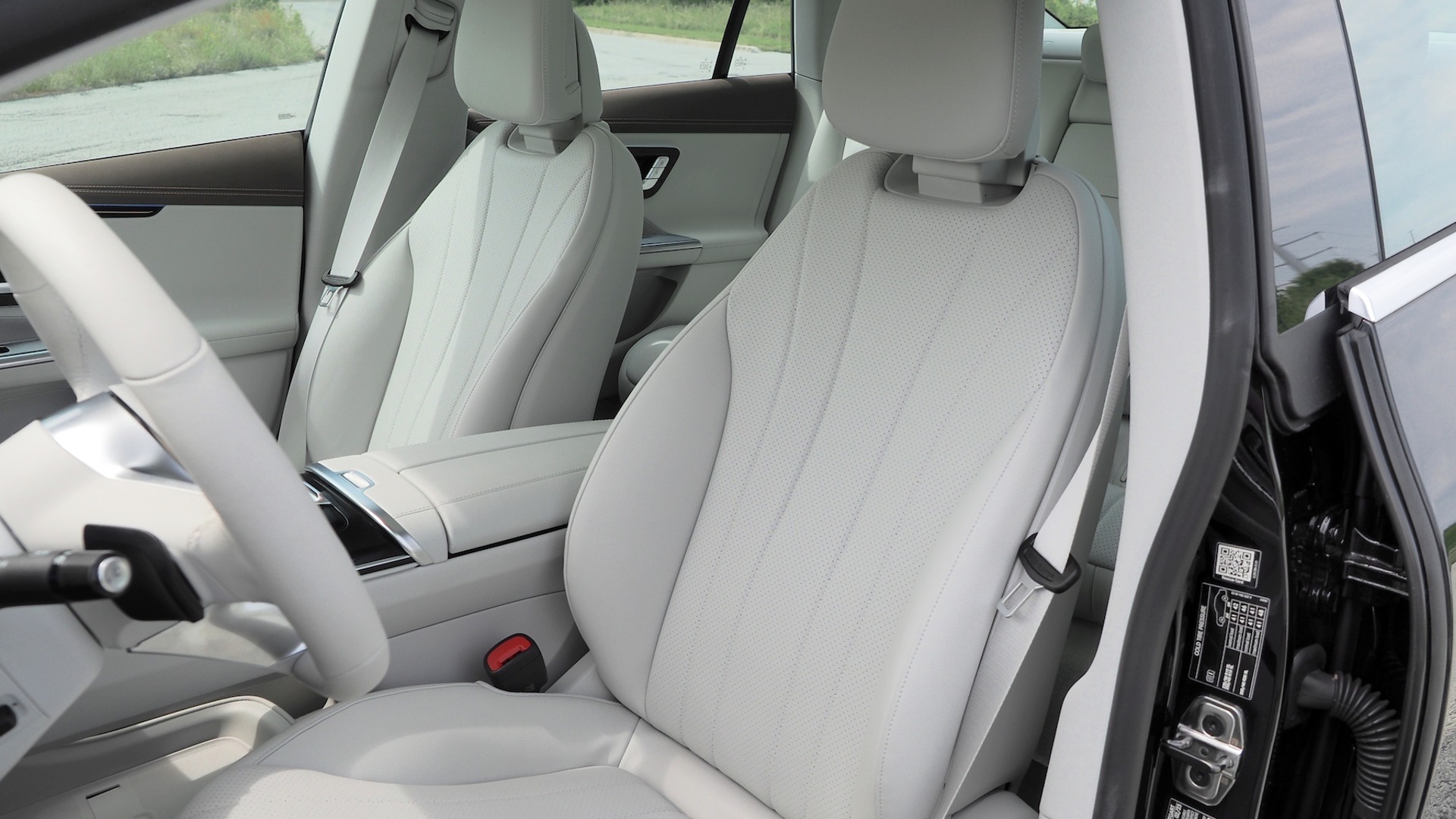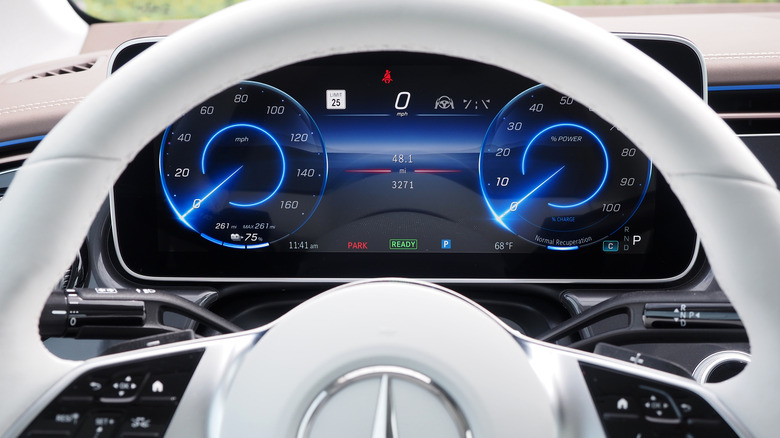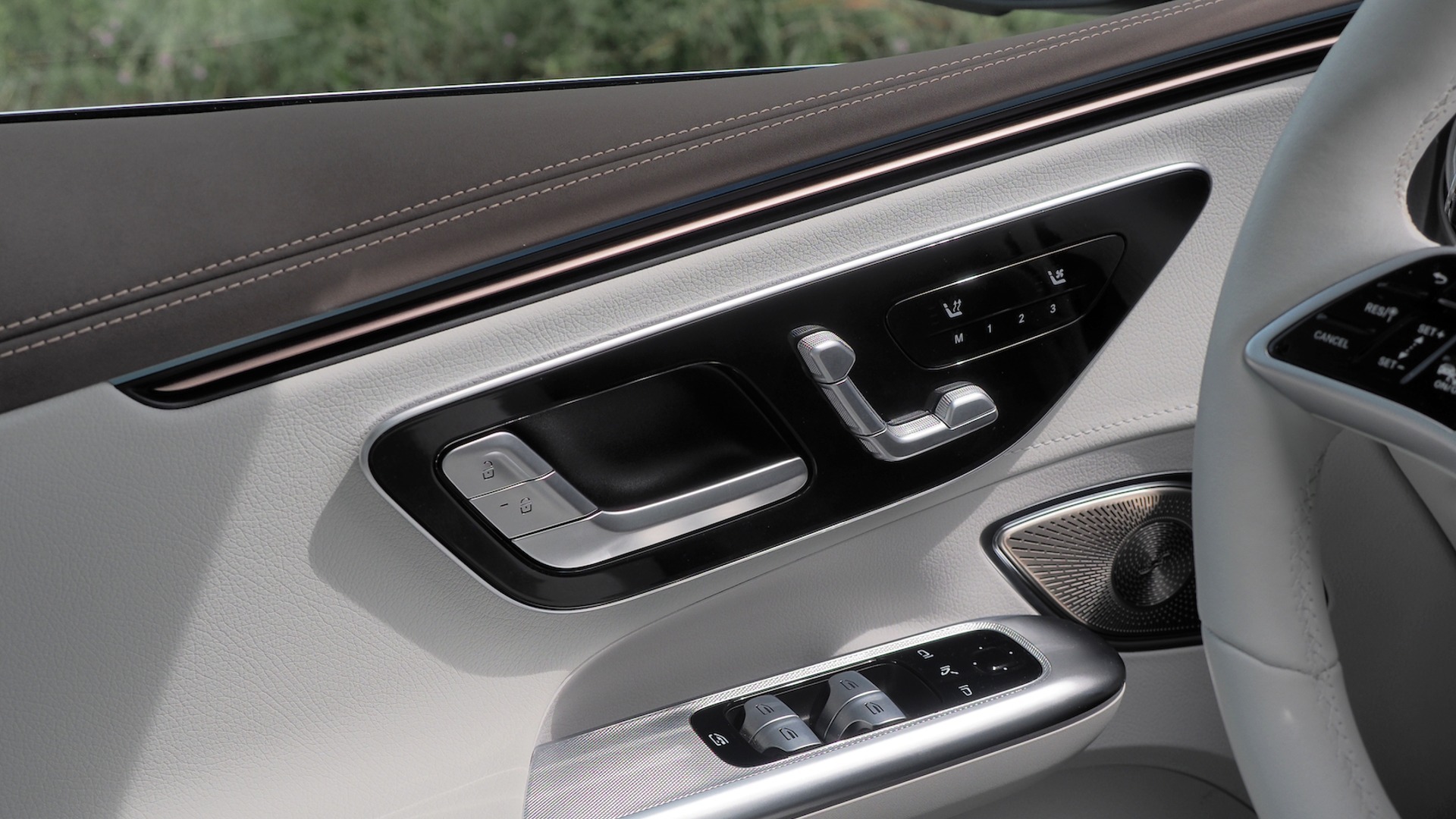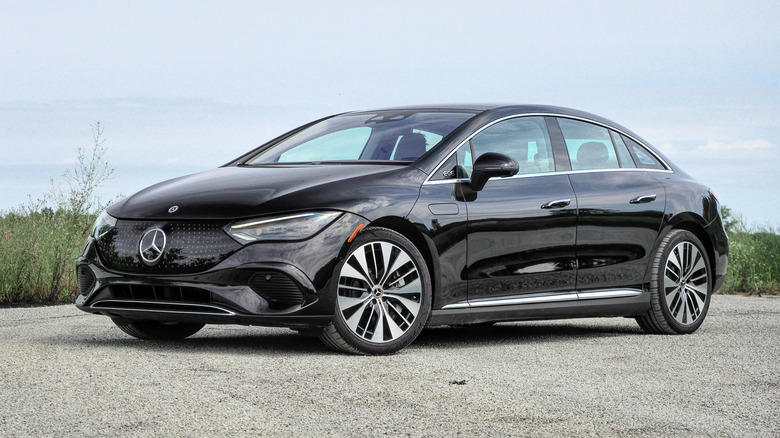2023 Mercedes-Benz EQE Sedan Review: Electric Luxury Feels Familar
- Mercedes' most affordable EV sedan still feels premium
- Smooth, refined drivetrain
- Plenty of easy-to-use tech
- Spacious cabin
- Range is solid but not the best
- Extras add up quickly
- Genuinely fast models are very expensive
Mercedes' vision of electrification feels a lot like, well, a Mercedes. Perhaps that shouldn't be too surprising: after all, Mercedes-Benz has nearly a hundred years of experience delivering its own particular recipe of Germanic luxury. Still, where other automakers seem to be using the transition from internal combustion to reinvent themselves in the process, Stuttgart's finest isn't so willing to stray from what that century of heritage has refined.
For the car that's not quite officially the "electric E-Class," then, there's a blend of the familiar and the new. The Mercedes-Benz EQE looks like a Mercedes, though perhaps one which has melted somewhat in the ravishing sun. It drives like a Mercedes, only one which comes even closer to the automaker's longstanding goals of hushed refinement. And, it straddles a line between traditional luxe and gadgetry like a Mercedes, one which arguably works more cohesively than some other outlandish Autobahn cruisers we've seen the company launch recently.
Affordable, by Mercedes EV standards
For the moment, the EQE is Mercedes' most affordable all-electric sedan — albeit here "most affordable" means "starts from $74,900 plus destination" — and this particular 2023 EQE 350 4MATIC is the second-cheapest version in the line-up. The range kicks off with the longest-driving model, in fact, courtesy of the EQE 350+ and its single electric motor. It has a 305-mile EPA rating.
The EQE 350 4MATIC adds a second electric motor for all-wheel drive and sees range dip to 260 miles from the same 90.6 kWh battery pack. It starts at $77,900 plus destination and also trims two-tenths of a second from the entry EQE's 6.2 second zero to 60 mph time.
If you need more speed, the EQE 500 4MATIC starts at $85,900, is all-wheel drive, and also has 260 miles of range. However, its more potent motors trim the zero to 60 time to 4.5 seconds. Finally, there's the AMG EQE sedan, for which you'll pay a heady $106,900. In return, you get 617 horsepower and a 3.2 second zero to 60 mph time, though only 225 miles of range.
Familiar style puts aerodynamics first
Mercedes makes good use of its curvaceous, aero-friendly styling: the EQE sedan is a smoothed bubble, faring in the grille and other fascia details in the name of minimizing resistance. It leaves the four-door looking very similar to the larger, more expensive EQS sedan, though the latter is 10 inches longer than the 197-inch long EQE. Those slightly squeezed proportions work well, though, even if the Obsidian Black Metallic paint of this particular review car lacks the sparkle of some of Mercedes' other finishes.
Nineteen-inch aero wheels are standard, though this car wears optional 20-inch versions, a $850 upgrade. Comfort suspension — i.e., steel — with adjustable dampers is standard, too, though here it has been swapped out for the $1,900 Airmatic air suspension. Equally useful is the 10-degree rear axle steering which — for $1,300 — leaves the EQE with a sharp turning circle at low speeds, and feeling more planted when lane-changing at highway pace.
Swift, but not outrageous
This might be one of the most affordable Mercedes EVs, but that doesn't mean it's underpowered. The dual motors contribute a total of 288 horsepower and 564 lb-ft of torque, which are genuinely impressive numbers. Of course, then you also have to take into account the fact that the EQE tips the scales at over 5,400 pounds.
The result is swift but not organ rearranging. Some EVs — including Mercedes' own AMG models — can border on genuinely uncomfortable at maximum acceleration. The EQE 350 4MATIC, in contrast, has no issue leaving behind internal combustion cars at stop lights, but it doesn't reach that aggressively visceral pace.
It's smooth and fairly effortless, though, and I can't say the acceleration ever disappointed me. In Comfort mode, the default setting, the air suspension is compliant and cosseting, gliding over potholes and bumps. Combine that with the EQE's lowest level of regenerative braking, which effectively allows the car to sail along the road, and a very hushed cabin, and this makes for a supremely relaxing road trip EV.
Enough range, but not class-leading
Switch to Sport, meanwhile, and things get firmer and a little more aggressive. The steering is heavier, and though the EQE is never going to be mistaken for a true sports sedan — the controls always feel a little remote — the combination of that heft plus the effective rear-wheel steering leaves it poised and agile. It also cranks up Mercedes' digital soundtrack, a love-it-or-hate-it blend of electronic warbles and burbling.
With my own mixed driving, I saw around 3.1 miles per kilowatt hour. That's not the very best in the electric luxury sedan segment, but it's still impressive. It also suggests that Mercedes' range estimate for the EQE 350 is actually a little conservative. Never a bad thing.
When it comes to recharging, there's 9.6 kW AC charging support, along with 170 kW DC fast charging support. Again, not bad, but not the fastest out there: a Kia EV6 will fast-charge faster. Eventually, Mercedes' EVs will be able to plug in at Tesla Supercharger stations, along with at the charger points Mercedes itself is planning to install. For now, though, EQE purchases or leases get two years of complimentary 30-minute sessions at Electrify America locations.
A spacious, welcoming cabin
The EQE's cabin is a mighty pleasant place to wait out that fast charging session, too, even if I'd be reluctant to bring pets, or kids (or some of my messier friends, frankly) into its crisp Nova White and Sable Brown MB Tex interior. It's airy and spacious — there are darker color schemes, plus full leather if you need it — with a standard panoramic roof, heated front seats, dual-zone climate control, 64-color ambient lighting, 360-degree camera, and a great-sounding Burmester 3D surround sound system. The trunk holds a reasonable 15 cubic feet.
This particular car's Exclusive trim — starting at $80,000 plus destination — adds augmented video for the navigation, active ambient lighting, and a bevy of driver-assistance systems like Active Distance Assist DISTRONIC, Active Lane Change Assist, and route-based speed adaption. Pinnacle trim, from $83,500, gets four-zone climate control with fragrance, a head-up display, six potent 100W USB-C ports, and Digital Light LED headlamps with animations.
I can't say I need the smells piped through the charming jet engine-style vents, but the ventilated front seats — a $450 option — and heated steering wheel — $250 — were nice additions. With a handful of other extras, it brings this particular EQE sedan to $89,155 all-in. That's a lot of money, especially when you consider you're getting plastic regen-adjusting steering wheel paddles, not metal, and leather costs an extra $1,600 to $3,000.
No Hyperscreen, no problem
One thing not on the options list is a bigger dashboard display. Mercedes' vast Hyperscreen isn't available on the EQE sedan, but I can't say I'm too bothered by its absence. The standard 12.8-inch portrait OLED touchscreen is plenty big enough — the driver gets a 12.3-inch digital cluster display, too — and the MBUX infotainment system looks great and remains easy to use. Well, with the exception of Mercedes touch-sensitive steering wheel controls, anyway, which I still find finicky and, in the case of the volume and cruise control speed sliders, just plain maddening to adjust.
Floating widgets atop the full-screen map — with a little reserved at the bottom for persistent climate controls — handle phone integration, multimedia, and shortcuts for navigation. My big test in any EV is how straightforward it is to find a public charger (and preferably a speedy one) while on the move, and MBUX handles that well.
There's also wireless Apple CarPlay and Android Auto, and a wireless charging pad for your smartphone. Mercedes' voice control system — triggered with the "Hey Mercedes..." command — is unexpectedly capable and accurate, too. I think I'd stick with the standard natural-grain brown wood dashboard trim, though: the large swathe of "3D relief optic" trim ($540) looks a little cheap to my eyes. Or, you can push the boat out (pun intended) and go for the yacht-design brown walnut with its metal inlays, a $1,500 addition.
Safe, but not self-driving
On the active safety front, every EQE sedan gets Mercedes' Pre-Safe system, active brake assist, front and rear cross-traffic alerts with pedestrian detection and automatic braking, blind spot assistance, active lane-keeping assistance, and parking sensors. Options include active steering assist and active blind spot asset, Pre-Safe Plus, and heated windshield wipers (no, not a safety feature per se, but fancy nonetheless).
With DISTRONIC active lane-change assistance, you can tap the turn signal while on the highway and the EQE will — after checking the coast is clear first, naturally — automatically move across the lane accordingly. Mercedes' adaptive cruise control is a hands-on system (rather than hands-off, like GM's Super Cruise), though the capacitive sensors in the steering wheel mean contact, not turning force, is what's tracked to make sure you have at least one hand poised to take control.
Sadly, there's no option for Mercedes' Drive Pilot, a Level 3 driver-assistance system that in specific circumstances — currently highway congestion under a certain speed — will allow the driver to watch a movie or check their email while the car operates itself. Currently, that's limited to the automaker's more expensive EQS and S-Class models, not to mention only in two U.S. states. Perhaps, by the time coverage has expanded, Mercedes will have relented and allowed EQE buyers in on the fun, too.
2023 Mercedes-Benz EQE Sedan Verdict
On the one hand, the EQE feels like, well, an electric Mercedes-Benz. After a sluggish start, the automaker has been working its way through its line-up and progressively filling in the EV gaps. The similarities between, say, the EQE sedan and the EQE SUV are relatively narrow, but Mercedes drivers know what they like. The company isn't messing with a recipe that works.
What stands out more, though, is how close the EQE sedan comes to its big brother, the EQS sedan. That's not exactly new territory for Mercedes: after all, with each generation, the E-Class' overlap with the S-Class seems to increase. If you regularly chauffeur rear-seat passengers who you want to keep impressed, then the bigger EQS has the edge, but for most I suspect an EQE is more than enough.
Yes, a BMW i4 is more rewarding to drive, and a Tesla offers more range. Lucid's Air Pure is an off-beat alternative, faster and with greater range, though the final sticker of this well-equipped EQE doesn't quite get you into the Lucid (and even then, you'd have to pay more for all-wheel drive). None does what the 2023 EQE sedan does, however: take what Mercedes buyers (and wannabe Mercedes buyers) love about the automaker's cars and recreate it for an electric future. The three-pointed star isn't just a brand, it's a mindset, and the EQE doesn't stray from that proven formula.
